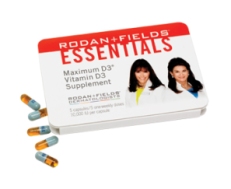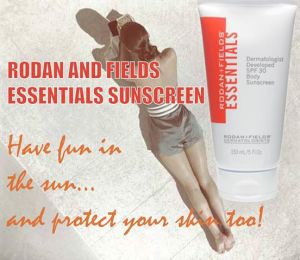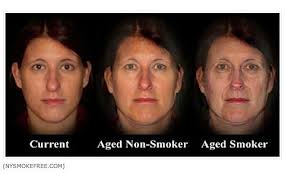by Debi G | Apr 11, 2014
 Vitamin D is a fat-soluble vitamin that prevents rickets in children, maintains bone density in adults, may inhibit certain cancers such as non-Hodgkin’s lymphoma and possibly lessens the risk of diseases such as multiple sclerosis.
Vitamin D is a fat-soluble vitamin that prevents rickets in children, maintains bone density in adults, may inhibit certain cancers such as non-Hodgkin’s lymphoma and possibly lessens the risk of diseases such as multiple sclerosis.
There is an ongoing debate in the medical community that daily sun exposure is critical for production of adequate vitamin D. It is true that sunlight stimulates the production of vitamin D; however, the Skin Cancer Foundation recommends that you get your daily value of vitamin D from non-sun sources, such as vitamin D–fortified milk, orange juice, salmon and other fatty fishes or a multivitamin containing at least 1000 international units of vitamin D3daily.

For More Information:
by Debi G | Apr 2, 2014
 Back in the Edwardian era of Downton Abbey, those with fair complexions went to great lengths to protect their skin from the sun. Pale, creamy skin, like that of the Crawley sisters, was a symbol of wealth, whereas a tan, leathery complexion was a demonstrable stigma of the laboring working class.
Back in the Edwardian era of Downton Abbey, those with fair complexions went to great lengths to protect their skin from the sun. Pale, creamy skin, like that of the Crawley sisters, was a symbol of wealth, whereas a tan, leathery complexion was a demonstrable stigma of the laboring working class.
That all changed in 1923, the year fashion icon Coco Chanel was seen leaving the Duke of Wellington’s yacht with a deep suntan. Chanel inadvertently had gotten too much sun while cruising the French Riviera but the press assumed the influential designer was making a fashion statement. Her bronzed skin was deemed the new status symbol. Soon, women in Europe and America followed her lead, the suntan came into vogue … and the trend has never really faded. Until now…
 While the sun provides warmth, light and life, it also can deliver blistering sunburns, premature aging and skin cancer. Studies show that as much as 80% of our facial aging is caused by our sun habits—not the passage of time—and that 90% of all skin cancers are caused by sun exposure. Yet, fewer than 33% of us routinely use sun protection.
While the sun provides warmth, light and life, it also can deliver blistering sunburns, premature aging and skin cancer. Studies show that as much as 80% of our facial aging is caused by our sun habits—not the passage of time—and that 90% of all skin cancers are caused by sun exposure. Yet, fewer than 33% of us routinely use sun protection.
So before you head off for that afternoon hike, baseball game or spring break travel adventure, REMEMBER, it’s never too early, or too late, to begin protecting yourself from the sun’s rays. When it comes to preventing premature aging and the threats to your health and appearance posed by the sun, the power is in your hands.
To see what most people are turning to for their protection visit https://debi.myrandf.com/Shop/Product/RVSS050
Message me to get a free sample of our Microdermabrasion Paste
by Debi G | Mar 24, 2014
 If your skincare philosophy is “Father Time calls the shots so what’s the use in trying”… think again.
If your skincare philosophy is “Father Time calls the shots so what’s the use in trying”… think again.
When it comes to facial aging, studies show that as much as 80% of our appearance is caused by our sun habits—not the passage of time. The good news is that while dermatologists once believed that 80% of a person’s lifetime sun damage occurred by age 18, we now know that only 20% of lifetime sun damage occurs by age 23, with 10% accumulating per decade thereafter.
Even if you were neglectful of sun protection as a child or teen, you can take a stand on how you age going forward. While most people know that skipping sunscreen when lounging at the pool is a bad idea, few realize that incidental sun exposure can be even more damaging. Whether sitting in a sunny office, commuting on the freeway or walking the dog, if we neglect to protect ourselves from daily sun damage, we’re putting our skin at risk for greater photoaging in the long run. Slathering your skin with a broad-spectrum UVA/UVB sunscreen and applying it often is the best way to shift the balance of power in your favor.

Click Here to See The Best Sunscreens
For More Information and a Private Consultation:
by Debi G | Mar 20, 2014
Ex Factors: Exposure to sun, facial expressions and other extrinsic elements of aging that account for 80 percent of your appearance and are greatly under your control.
 The “nature versus nurture” debate might be one of the oldest in psychology, but when it comes to skin, no discourse is necessary.
The “nature versus nurture” debate might be one of the oldest in psychology, but when it comes to skin, no discourse is necessary.
Intrinsic, genetic “who you are”— components of aging account for just 20 percent of your skin’s visible aging changes. On the other hand, “ex factors”—or extrinsic, “what you do” elements—account for 80 percent of your appearance. Sunlight, smoking, sleep positions, stress, diet, and alcohol are all at the top of the “ex list.”
Great skin has more to do with what you do to it than with what you’ve been given. But if you’re not convinced, a study of identical twins by researchers from King’s College London provides ample evidence. Extracting DNA samples from volunteers, researchers discovered that those who vigorously exercised three hours a week were biologically nine years younger than those who exercised fewer than 15 minutes weekly. Amazingly, even 90 minutes of exercise per week reduced biological age by four years.

Because identical twins share the same genetic makeup, it was previously believed they would age in exactly the same way. However, this study demonstrated that a twin enjoying a lifestyle of regular exercise, minimal sun exposure, a healthy diet, limited alcohol consumption and no smoking aged noticeably better than her twin who made poorer lifestyle choices. The study also proved that she would not only look better but also outlive her sister.
While aging is inevitable, your choices and behaviors around “ex factors” greatly influence how you look at each birthday. Whatever your age, it’s never too soon or too late to start incorporating good habits. By creating positive change today, your skin won’t have to pay the price later.
 More people are switching to Rodan+Fields. Clinically proven products that REALLY work! Message me for your free sample!
More people are switching to Rodan+Fields. Clinically proven products that REALLY work! Message me for your free sample!
Visit My Website To See More
 Vitamin D is a fat-soluble vitamin that prevents rickets in children, maintains bone density in adults, may inhibit certain cancers such as non-Hodgkin’s lymphoma and possibly lessens the risk of diseases such as multiple sclerosis.
Vitamin D is a fat-soluble vitamin that prevents rickets in children, maintains bone density in adults, may inhibit certain cancers such as non-Hodgkin’s lymphoma and possibly lessens the risk of diseases such as multiple sclerosis.

 Back in the Edwardian era of Downton Abbey, those with fair complexions went to great lengths to protect their skin from the sun. Pale, creamy skin, like that of the Crawley sisters, was a symbol of wealth, whereas a tan, leathery complexion was a demonstrable stigma of the laboring working class.
Back in the Edwardian era of Downton Abbey, those with fair complexions went to great lengths to protect their skin from the sun. Pale, creamy skin, like that of the Crawley sisters, was a symbol of wealth, whereas a tan, leathery complexion was a demonstrable stigma of the laboring working class. While the sun provides warmth, light and life, it also can deliver blistering sunburns, premature aging and skin cancer. Studies show that as much as 80% of our facial aging is caused by our sun habits—not the passage of time—and that 90% of all skin cancers are caused by sun exposure. Yet, fewer than 33% of us routinely use sun protection.
While the sun provides warmth, light and life, it also can deliver blistering sunburns, premature aging and skin cancer. Studies show that as much as 80% of our facial aging is caused by our sun habits—not the passage of time—and that 90% of all skin cancers are caused by sun exposure. Yet, fewer than 33% of us routinely use sun protection.



